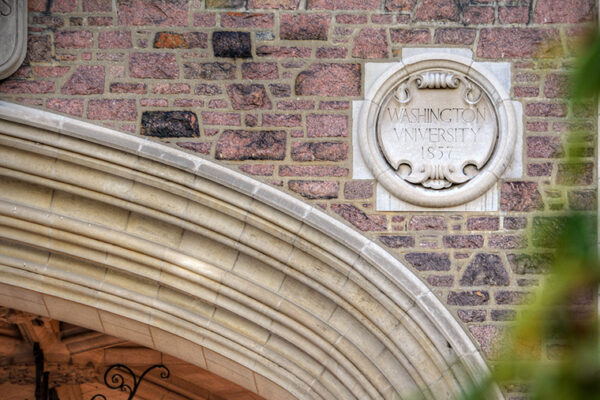A newly released report provides insight into public safety at Washington University in St. Louis, with a focus on exploring how the university can best support safety on and near the Danforth Campus to meet the needs of its diverse community. The report was completed this month by the university’s Public Safety Committee, which Henry S. Webber, executive vice chancellor for civic affairs and strategic planning, convened last fall.
The committee, which comprised Washington University students, faculty, staff and alumni, was co-chaired by Gerald Early, the Merle Kling Professor of Modern Letters, professor of English and chair of African and African American studies, and Stephanie Kurtzman, the Peter G. Sortino Director of the Gephardt Institute for Civic and Community Engagement. Click here to read the full report.
“I greatly appreciate and commend the committee members for their efforts,” Webber said. “The safety and security of the university community is our highest priority, and we will become stronger in that work because of the committee’s candid and thoughtful report. I am especially grateful to the students who have urged us to keep our focus on this critical issue along the way, as well as those students who participated in the committee, for lending their invaluable perspectives.”
The committee completed its work over a four-month period, conducting numerous interviews, reviewing background materials, and commissioning a public safety survey to gather feedback on the Danforth Campus community’s broad experiences with safety and to gather ideas for improving public safety on and around campus.
“On behalf of my co-chair, Stephanie Kurtzman, I want to thank the committee as well as the many members of the university community who shared feedback with us,” Early said. “The perspectives were invaluable and often illuminating. Our hope was to deliver to the university a report that captures the complexity and depth of this issue that we explored in committee and through the testimony of other students, faculty and staff. I am grateful for the committee’s dedication to its charge and heartened by the university’s commitment to taking a nuanced, open and reflective approach to this challenging subject.”
In the report, the committee makes three primary recommendations:
- Reimagine the response to mental health incidents on the Danforth Campus and make necessary modifications to ensure that those incidents are addressed — from beginning to end — by the most appropriate resources.
- Create concrete and sustained opportunities for the Danforth Campus community to provide feedback as part of a concerted, ongoing commitment by the administration to evaluate and adjust as necessary the public safety program on and around the Danforth Campus.
- Improve communications related to public safety with a focus on easily available information, deliberate outreach to specific constituencies, transparency and accountability.
“The university is fully committed to implementing the recommendations outlined in the report,” Webber said. “We have already begun planning efforts, and changes will begin to be implemented over the summer. I’m confident these developments will yield positive results for the Danforth Campus community, including ongoing opportunities for feedback and dialogue as we continually strive to improve our approach to safety and security.”
“I believe the committee’s recommendations will make a tremendous impact on students as well as the general WashU community,” said Tennyson Holmes, a Washington University junior who served on the committee. “I am especially passionate about recommendations for additional funding specifically for mental health crisis response workers and ensuring that our emergency call and dispatch system is equipped to triage emergency calls, especially mental health crises. These two recommendations will help take many burdensome responsibilities away from WUPD, allowing WUPD to focus on police work while giving more control over mental health and medical emergencies to services like mental health professionals and EST (Emergency Support Team).”
The committee’s work and report are a component of the university’s renewed commitments to racial equity, which Chancellor Andrew D. Martin outlined in a communication to the university in June 2020 as concrete actions geared toward addressing systemic racism and its toll on our Black communities. Updates on each of those commitments are available on the 2020 Commitments to Racial Equity page on the Diversity and Inclusion website.
Implementing the committee’s recommendations will require an ongoing and long-term commitment by the university, in accordance with the report’s conclusion, which states: “We see our recommendations as a first step, a beginning, a launch of a sustained and robust conversation about and an ever-deepening institutional commitment to public safety both on the campus and beyond it. The Committee’s belief is that genuine safety means safety for everyone, a lofty goal but one that the university can hardly shirk and, indeed, must make every effort to attain if we are to be the university we strive and are compelled to be.”



Comments and respectful dialogue are encouraged, but content will be moderated. Please, no personal attacks, obscenity or profanity, selling of commercial products, or endorsements of political candidates or positions. We reserve the right to remove any inappropriate comments. We also cannot address individual medical concerns or provide medical advice in this forum.